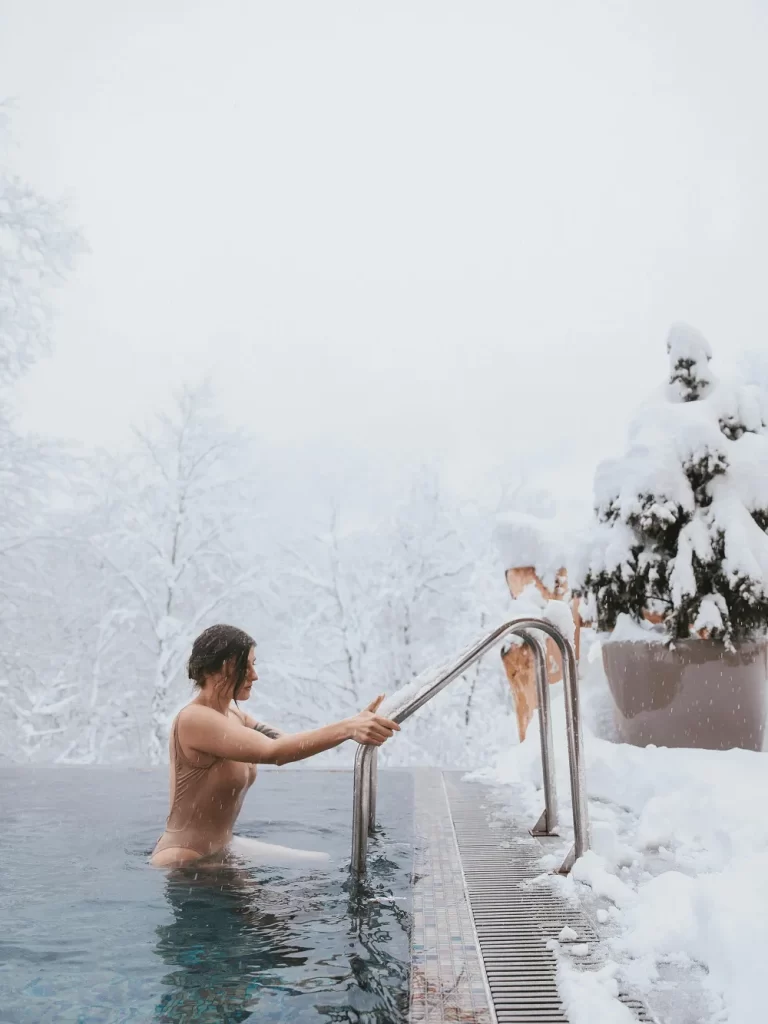Cold Plunge Benefits for Women in Perimenopause and Menopause
Mama, let’s dive into the invigorating world of cold plunging and explore how this practice can be a game-changer during perimenopause and menopause. If the thought of immersing yourself in cold water sounds intimidating, don’t worry—you’re not alone! But once you learn about the benefits, you might just find yourself ready to take the plunge. Cold plunging, or short-term immersion in cold water, has been celebrated for its ability to manage stress, reduce inflammation, and support overall well-being. And for women navigating hormonal changes, it offers some mighty advantages.
What is Cold Plunging? A Look at Its History
Cold plunging isn’t new—it’s a wellness ritual with roots that stretch back thousands of years. Many ancient cultures recognized the rejuvenating power of cold water and incorporated it into their health practices:
-
Ancient Romans: The Romans were famous for their elaborate bathhouses, which often included frigidarium chambers—cold baths used to stimulate circulation and invigorate the body after hot baths.
pmc.ncbi.nlm.nih.gov -
Nordic Traditions: Scandinavian cultures have long practiced plunging into icy lakes or the sea, often following a sauna session. This “hot-cold” contrast is still a cherished tradition in Finland and other Nordic countries.
Wikipedia -
Japanese Onsen Culture: While primarily focused on hot springs, Japanese bathing culture also includes cold water baths for health and vitality.
-
Ayurveda in India: Ancient Ayurvedic practices often recommended cold water exposure to balance the body’s doshas and promote overall health.
Today, cold plunging is a core element of wellness in many parts of the world, including Nordic countries, Japan, and Russia. These cultures have long understood what modern science is now confirming: cold water immersion offers profound health benefits.
What Happens During Perimenopause and Menopause?
Perimenopause and menopause are natural stages in a woman’s life, but the hormonal shifts that accompany them can be challenging. Declining levels of estrogen and progesterone can lead to:
-
Hot flashes and night sweats
-
Mood swings and anxiety
-
Fatigue and sleep disturbances
-
Joint pain and inflammation
-
Weight gain and slowed metabolism
These symptoms can disrupt your quality of life, but incorporating cold plunging into your routine can help you find relief naturally.
Key Benefits of Cold Plunging for Perimenopause and Menopause
-
Reduces Hot Flashes and Night Sweats
Cold plunging helps regulate your body’s internal temperature, offering immediate relief from hot flashes. Regular exposure to cold water may also lower the intensity and frequency of these episodes.
Mayo Clinic Health System -
Improves Mood and Reduces Anxiety
When you immerse yourself in cold water, your body releases feel-good chemicals like endorphins, dopamine, and serotonin. This natural boost can alleviate mood swings, reduce anxiety, and improve emotional resilience.
Stanford Center on Longevity -
Enhances Sleep Quality
Struggling with sleep disturbances? Cold plunging calms your nervous system, promoting relaxation and better sleep. By lowering cortisol levels, it helps you fall asleep faster and stay asleep longer.
Oregon News -
Boosts Circulation and Metabolism
Cold water immersion stimulates blood flow, improving oxygenation throughout the body. This can energize your cells, support a healthy metabolism, and even aid in weight management—perfect for those dealing with hormonal changes that slow metabolism.
pmc.ncbi.nlm.nih.gov -
Reduces Inflammation and Joint Pain
Joint pain and stiffness are common complaints during menopause, but cold therapy’s anti-inflammatory properties can help. Regular cold plunging soothes sore joints and promotes better mobility.
Mayo Clinic Health System -
Supports Hormonal Balance
While cold plunging doesn’t directly increase estrogen or progesterone, it reduces cortisol (the stress hormone) and supports adrenal health, helping your body maintain better hormonal equilibrium.
Oregon News
Cold Plunging Around the World Today
In some regions, cold plunging is more than a wellness trend—it’s a way of life:
-
Nordic Countries: Scandinavians continue their tradition of alternating between saunas and icy water, which they believe promotes longevity and mental clarity.
Wikipedia -
Japan: Cold water baths are part of traditional health practices, and some shrines have cold-water waterfalls used for spiritual cleansing.
-
Russia: Winter swimming, or “morzhevanie,” involves cutting holes in frozen lakes and plunging into the icy water. It’s believed to boost immunity and energy.
Wikipedia -
United States: Cold plunging is gaining popularity in wellness communities, with cold plunge pools and cryotherapy becoming more accessible.
How to Get Started with Cold Plunging
-
Start Small
If you’re new to cold therapy, start by ending your shower with 10-30 seconds of cold water. Gradually increase the duration and intensity as your body adapts. -
Focus on Breathing
Controlled breathing is key! Slow inhales and longer exhales help you stay calm and reduce the shock of the cold. -
Be Consistent
Aim for 3-4 sessions per week to fully experience the benefits. Whether it’s a cold shower, an icy plunge bath, or a winter swim, consistency is essential. -
Safety First
If you have any medical conditions, consult your healthcare provider before starting cold therapy. Always listen to your body and avoid overexposure.
Alternative Cold Therapy Options
Not ready to dive into a full cold plunge? Try these gentler options:
-
Cold Showers: A more accessible way to practice cold exposure daily.
-
Cold Packs: Apply to inflamed or painful areas
-
Cryotherapy: Step into a chamber filled with cold air for a quick session that offers similar benefits.
Final Thoughts
Cold plunging is more than a wellness trend—it’s a time-tested practice that can help you navigate the challenges of perimenopause and menopause with strength and resilience. From soothing hot flashes to boosting your mood and sleep, cold therapy is a natural, effective way to restore balance to your body during this transformative stage of life.
So why not take the plunge? Start small, stay consistent, and embrace the invigorating benefits of cold plunging. With each session, you’ll feel stronger, calmer, and more in control of your health.

